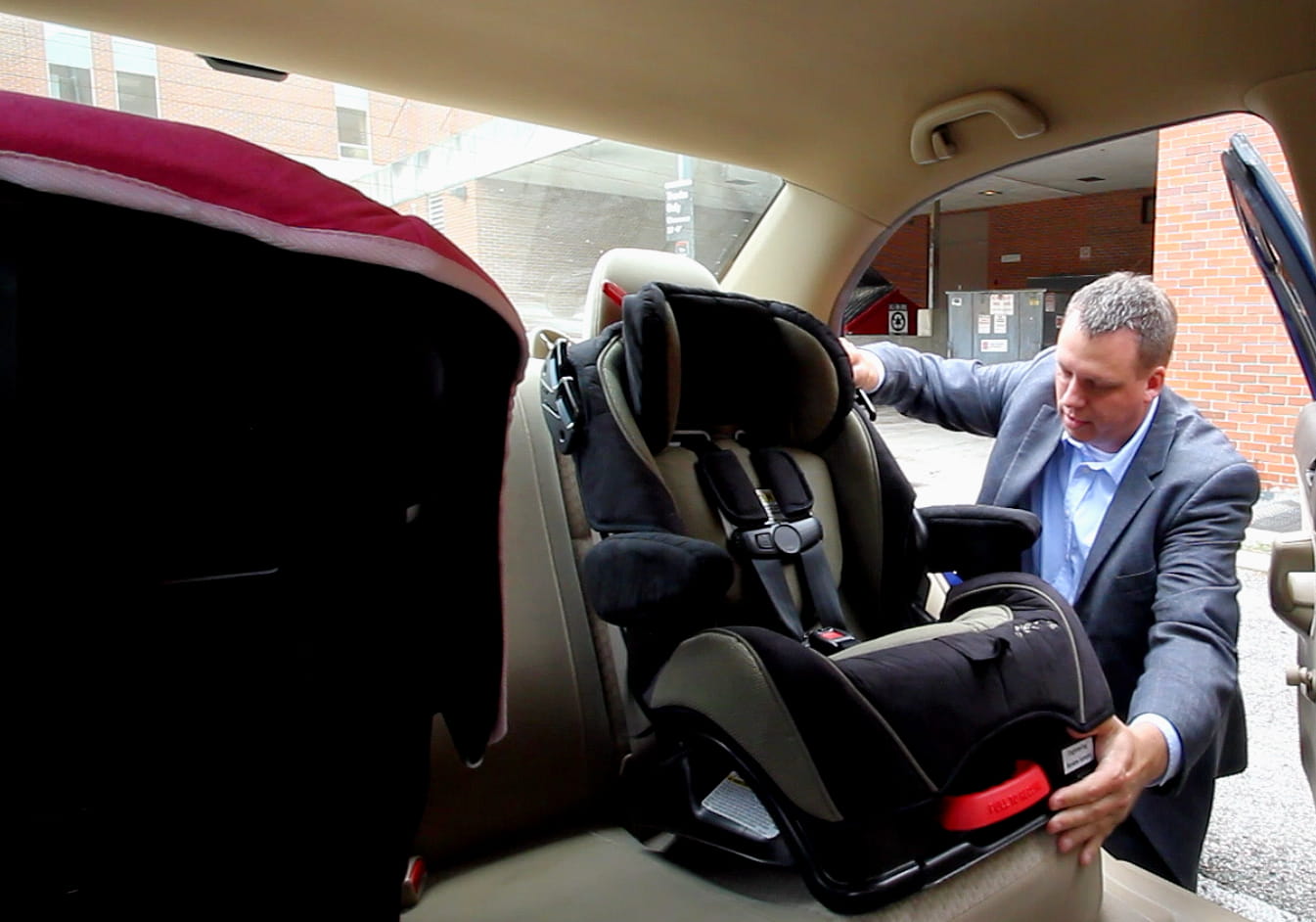July 23, 2013
 COLUMBUS, Ohio – A team of researchers from The Ohio State University College of Medicine is assessing the feasibility of car seats’ installation and their compatibility with various vehicles, and providing evidence to support the proper type of seat based on a child’s age and size.
COLUMBUS, Ohio – A team of researchers from The Ohio State University College of Medicine is assessing the feasibility of car seats’ installation and their compatibility with various vehicles, and providing evidence to support the proper type of seat based on a child’s age and size.
Data from 3,186 car seat-vehicle combinations were collected and analyzed. The results showed: seat pan angle, especially for rear-facing car seats – 43.6 percent of all combinations were unacceptable; width of the car seat compared to the width of the vehicle seat – 34.3 percent of all combinations were less than ideal; height of seat back, especially for forward-facing car seats – 22.2 percent of all combinations were unacceptable; clearance space behind front-row seats, especially for rear-facing car seats – 20.5 percent of all combinations did not fit with the front seat at mid-track; and length of top tether – 7.7 percent of all combinations were too loose.
 “Car seats themselves are safe. They may just not fit properly in a particular car. We want caregivers to consider taking a few measurements and note some key dimensions of their vehicle before making a decision about a car seat. Taking a few measurements might save a child’s life,” said John Bolte, associate professor of anatomy and director of Ohio State’s Injury Biomechanics Research Center.
“Car seats themselves are safe. They may just not fit properly in a particular car. We want caregivers to consider taking a few measurements and note some key dimensions of their vehicle before making a decision about a car seat. Taking a few measurements might save a child’s life,” said John Bolte, associate professor of anatomy and director of Ohio State’s Injury Biomechanics Research Center.
Another Ohio State study is seeking to identify the comfort level of larger, older children while riding in rear-facing car seats according to American Academy of Pediatrics (AAP) and National Highway Traffic Safety Administration (NHTSA) guidelines. The AAP and NHTSA recommend that children ride in rear-facing car seats until they are two years old, or until the maximum weight limit for their car seat is reached. While research has shown rear-facing car seats to be better than forward-facing car seats and protect children’s heads and necks during car crashes, studies also show that only 13 percent of children 12 – 23 months of age ride in rear-facing car seats.
“Many parents transition their child to forward-facing car seats too early because they believe that their child has outgrown the rear-facing car seat and the child is too large to be comfortable in that configuration,” Bolte said.
For Phase I of this comfort study, 20 children 22-26 months of age were recruited to sit rear-facing and forward-facing for 20 minutes each in a lab setting. Video footage was analyzed, and parent surveys were collected to help gauge the children’s comfort levels. Researchers concluded that parental perception scores reflecting comfort levels for rear-facing and forward-facing car seats were similar, and video footage revealed the same.
“Based on the preliminary data of this study, comfort scores are similar for rear and forward-facing car seats and support the extended use of rear-facing car seats. Caregivers should always choose the option that is safest for their child,” Bolte said.
For Phase II of the comfort study, Bolte and his team will examine video from a family’s vehicle while the child rides in each car seat configuration.
###
High-quality video and photos are available at: http://bit.ly/1955dwX
Click here for a high-resolution photograph of John Bolte.
Contact: Sherri Kirk, Wexner Medical Center Public Affairs and Media Relations, 614-293-3737, or Sherri.Kirk@osumc.edu

